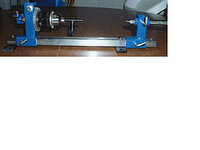Timbo
Member
Not sure where else to post this, so I hope I'm not breking any rules.
I want to create some inlayed pens using my laser engraver, which require a stationary indexing jig. The jig needs to be accurate and repeatable. The use of the automatic rotary attachment is not suitable for my needs. I basically know what I want to build, and I have a good starting point. What I don't have are metal working equipment or skills, nor a lot of the time to figure out stuff that some of you would find simple and probable enjoyable. This would be a collaborative effort. You provide most of the engineering and metalworking. I certainly can make wood parts, but can also fabricate accurate acrylic parts (e.g indexing wheels) using my laser.
I'd rather do this on the barter system. I can offer laser engraving/cutting services in return. If you're interested and up for a challange please PM me. Thanks for reading this.
Tim
I want to create some inlayed pens using my laser engraver, which require a stationary indexing jig. The jig needs to be accurate and repeatable. The use of the automatic rotary attachment is not suitable for my needs. I basically know what I want to build, and I have a good starting point. What I don't have are metal working equipment or skills, nor a lot of the time to figure out stuff that some of you would find simple and probable enjoyable. This would be a collaborative effort. You provide most of the engineering and metalworking. I certainly can make wood parts, but can also fabricate accurate acrylic parts (e.g indexing wheels) using my laser.
I'd rather do this on the barter system. I can offer laser engraving/cutting services in return. If you're interested and up for a challange please PM me. Thanks for reading this.
Tim

